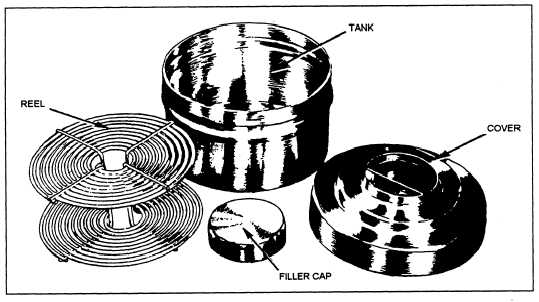Figure 11-25.—Roll film processing tank and red.
The purpose of the fixer is to convert the silver
halides not changed to metallic silver in the developer
into a soluble form. These soluble salts diffuse out of the
emulsion and into the fixer. Navy imaging facilities use
a recovery system to reclaim silver from chemically
exhausted fixer.
Most fixer formulas include chemicals to harden the
emulsion, which is greatly softened by the alkaline
developer, and minimize scratching in later processing
and handling. There are many types of fixers and many
brands, as is the case with developers. All do their
intended job if the manufacturer’s directions are
followed.
Wash
Running water is not actually required but greatly
simplifies the removal of all the chemicals previously
used. The wash step is necessary if you desire a
permanent image without stains. Wash films and papers
with fresh running water for about five minutes.
Wetting Agent
The wetting agent, usually called Photo-Flo, is a
chemical designed to reduce the surface tension of
water, thus reducing the possibility of water spots
forming on film as it dries. It reduces the overall drying
time of your films and prints — a point to consider
especially on “rush jobs.”
DARKROOM EQUIPMENT
The equipment required to process film can be
minimal: a processing tank, graduate (measuring cup)
and thermometer. During processing, the film must be
kept in total darkness until the image is fixed. Although
there are other methods for accomplishing this, the
simplest method is to use a lighttight stainless steel tank
designed for the type and size of film being processed.
TANK DEVELOPING ROLL FILM
LEARNING OBJECTIVE: Identify the steps
involved in developing roll film in a tank.
It is more convenient to develop roll film in a small
tank than in a tray. The results are usually better, and the
possibilities of damage to the film are minimized.
Additionally, after the film is loaded in the tank you can
turn on the regular room lights and complete processing
in normal room light.
Since the film must be loaded in total darkness, you
should turn off all lights and allow your eyes to adjust
for a few minutes before opening the film container.
Examine the room for light leaks (cracks in walls,
around doors, around air conditioners or vents). If you
can see what you are doing after a few minutes, there is
too much light in the room and the condition must be
corrected before opening the film cassette.
The most common unit used to develop roll film
consists of a stainless steel, center feed, spiraled reel to
hold the film; a tank with a lighttight cover; and a filler
cap. The construction of tanks and reels differ somewhat
among the various manufacturers’ models, resulting in
differences in loading and use. However, the one you
are most likely to use is shown in figure 11-25, and the
following discussion will be based on this equipment.
11-29


